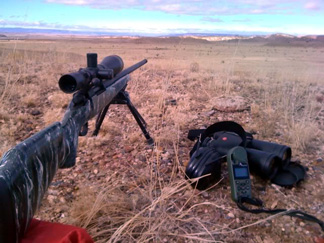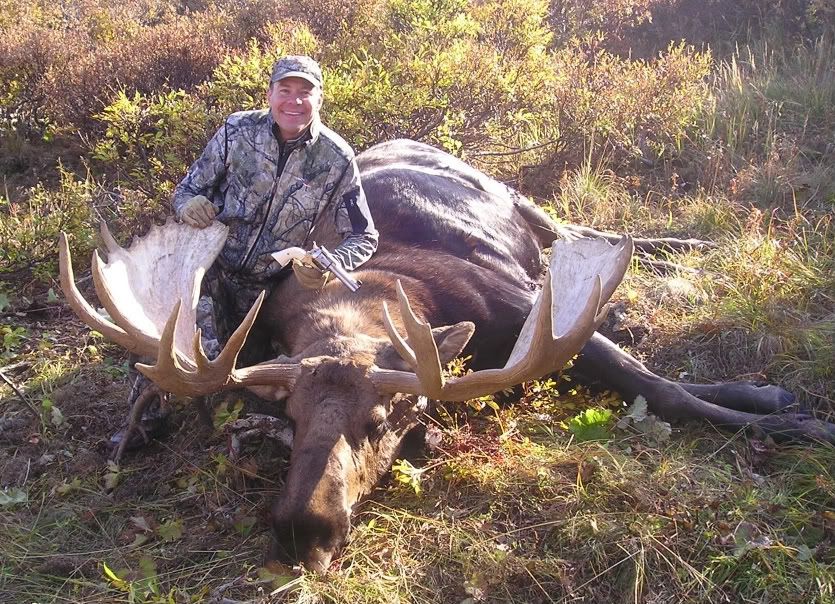

 The Accurate Reloading Forums
The Accurate Reloading Forums  THE ACCURATE RELOADING.COM FORUMS
THE ACCURATE RELOADING.COM FORUMS  Rifles
Rifles  Long Range Shooting
Long Range Shooting  Opinions on Wind Meters
Opinions on Wind MetersGo  | New  | Find  | Notify  | Tools  | Reply  |  |
| One of Us |
What do you think? | ||
|
| One of Us |
I think When you first get started out in this, it's difficult to put a number on wind speed if you really have no reference. The meter is great for showing you what the wind is doing at your location, its peak and its valleys when it lets off. The problem then becomes "what is the wind doing between here and there?". You have to look at mirage, what grass, trees and brush are doing all the way to the target. Then let your buddy shoot first and be the "wind bitch" I use a Kestrel 4000 which gives all kinds of atmospheric conditions at your current loctation. They are all important to adjust your confirmed data to current conditions. | |||
|
| One of Us |
I've got a Kestral 4000 too! But I hardly ever use the wind meter feature. I use it mostly for getting atmospheric conditions. For wind conditions I prefer to observe range flags (if available) and reading spotting scope mirage.
Unfortunately I can't do that because in that case I would be blamed for being a shitty spotter! | |||
|
One of Us |
| |||
|
| One of Us |
Alan, I agree. I just had to have the best toy available. More dollars than sense at the time I bought it! | |||
|
One of Us |
I have been watching the wind for many years, but the accuracy and precision of the various Kestral's is beyond me. I think they are a big +, and used properly an amazing asset.  Member NRA, SCI- Life #358 28+ years now! DRSS, double owner-shooter since 1983, O/U .30-06 Browning Continental set. | |||
|
| One of Us |
I have the Kestrel 4500, 4000, and the 3500. I like the 3500 the best and that is the one that I always take to the field As rcumgula said the wind meter will give acurate wind reading at your location with this reading, you can observe the foiage movement near you. Then with careful observation through your spotter you can read the movement of the foliage down range and with practice this will give an accurate wind read _____________________________________________________ A 9mm may expand to a larger diameter, but a 45 ain't going to shrink Men occasionally stumble over the truth, but most of them pick themselves up and hurry off as if nothing had happened. - Winston Churchill | |||
|
| One of Us |
After you have everything set up on your rifle, your load established with all of the drop/wind data confirmed, Long Range Shooting then becomes almost a 100% game of wind reading. You know the range of the target whether it is given or ranged with your range finder. Your data for drop is correct, so your error will be left or right if you don't nail the wind. That's why developing a load with as little vertical dispersion is critical. The meter gives you a good idea what's going on, and like jwp says, watch the foliage all the way to the target. At the SRM, the shooter has 4 minutes to lay down, make adjustments to the bipod, and engage 6 targets. During that time period, the wind starts, stops, revs up, lays down, and sometimes even changes direction completely. You may think you have a good read on it, then you miss and see dirt fly at the target in the opposite direction of your read...amazing. There's luck in the draw as to what is happening when it's your turn to get prone. In the mountains the wind is quite fickle. On wide open ground, I think it's more predictable and consistent. There's no substitute for sending a lot of bullets down range in as many different wind conditions as possible. It's blowing like a hurricane right now here; about the same conditions statewide as we had in Raton last weekend. 50 mph gusts. It was fun trying to figure it out and a real learning experience. Two guys kicked butt only missing 10 out of 60 targets which was genius for the conditions. I know one of them doesn't even use a wind meter but he has more experience than anyone I know. Chief instructor for DOE and ex-SWAT sniper. Educational to watch him to say the least. | |||
|
| one of us |
Very true. I use a Kestrel as well, but just holding it in the wind on any given day will show the speed going plus or minus 2 all the time, to say nothing of what it is doing downrange. And to say nothing of what it will in the one second travel time it takes to get down range. Rick, How big are those targets? | |||
|
| One of Us |
Wind speed measured from your firing position give you almost NO idea what's happening way downrange. Reading spotting scope mirage is still the best method I know of for calculating windage in the field. But.... I may be wrong and will willingly accept better ideas (if they are out there). | |||
|
| One of Us |
| |||
|
One of Us |
It seems that there two ways of doing it. The first and the one espoused here is to measure the wind speed at the firing point and extrapolate the changes downrange from that baseline. This method is useful if you shoot with a PDA. The old fashion method doesn't talk about wind speed in mph at all, it talks in terms of windage in MOA from start to finish. This method is almost entirely mirage based, using the range flags to provide baselines from which to extrapolate changes down range. Because of the multiple baselines provided by the windflags, the latter method is a better and more accurate way of correcting for windage on the range, IMO, but cannot be used in the field like the windmeter/PDA method. Both methods rely on mirage reading if they are to be anything other than an slightly augmented guess but both provide the baseline from which to work IMO. | |||
|
| One of Us |
Ghubert, are you calling me "old fashioned"?!!! BTW - I agree basically with what you said ......BUT..... there are so many different factors that can affect "over the course windage". Measuring wind velocity from your firing point is better than nothing. But being able to read the wind velocity nearest your target or over the course (as with mirage) is the most important. As velocity drops wind deflection increases. So the best readings are closer to the target. It's impractical to place wind flags in the field.... not so in competition. So when available, use them. And when not available, read the movement of trees, vegetation, blowing dust, and other signs to get a good estimate of windage direction and speed. | |||
|
| one of us |
Da Man, Totally agree about mirage. Unfortunately, it is much harder to see mirage here in in AZ than say, Wyoming. But when it exists, it gives a composite picture of the wind, which is obviously invaluable. Range flags are a great help if you are shooting on a range in competition, but then again, your sighters even more so. But it hunting, we don't have range flags. There are other indicators, but at the end of the day, they are just that: indicators, all prone to misinterpretation. The odds of hitting a given sized target at a given range are fairly easy to calculate. As Rick pointed out, the wind estimation error becomes about 95% of the problem at long ranges. | |||
|
One of Us |
Yup. | |||
|
| Powered by Social Strata | Page 1 2 |
| Please Wait. Your request is being processed... |
|
 The Accurate Reloading Forums
The Accurate Reloading Forums  THE ACCURATE RELOADING.COM FORUMS
THE ACCURATE RELOADING.COM FORUMS  Rifles
Rifles  Long Range Shooting
Long Range Shooting  Opinions on Wind Meters
Opinions on Wind Meters

Visit our on-line store for AR Memorabilia

